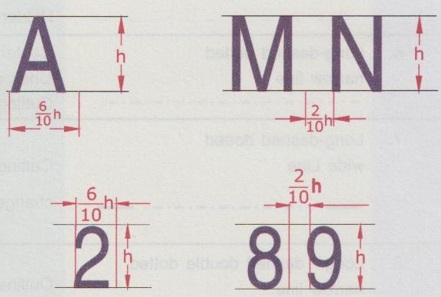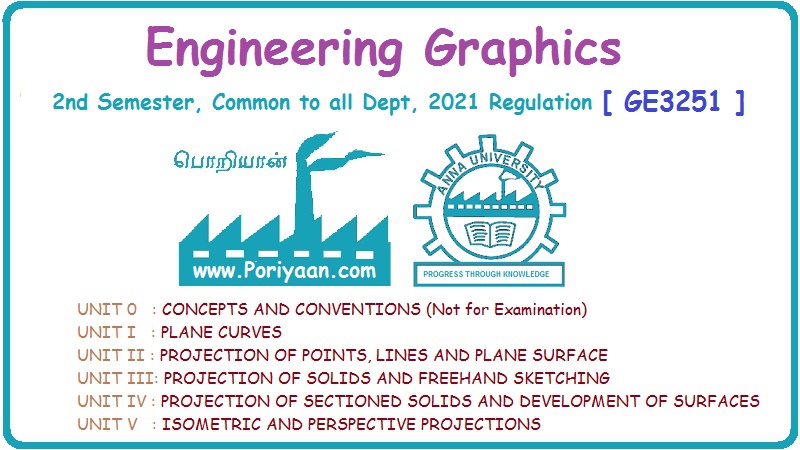Engineering Graphics: Unit 0 (c): Lines, Lettering and Dimensioning
Rules of Lettering
Engineering Graphics (EG)
The Bureau of Indian Standards Code IS 9609 (Parts 0 & 1) - 2001 Specifies lettering. Specifications of letters and the rules of lettering recommended by BIS are summarised below.
RULES OF LETTERING The Bureau of Indian Standards Code IS 9609 (Parts 0 & 1) - 2001 Specifies lettering. Specifications of letters and the rules of lettering recommended by BIS are summarised below. 1. All letters should be generally in capitals, however small letters can be used wherever necessary. 2. Both vertical and inclined letters are in use. 3. All letters and numerals should not touch each other. 4. Letters should be so spaced that the area between letters appears equal. 5. Words should be spaced one letter apart. 6. The width of the letter is about 0.67 times of the height of the letter. 7. The space between two sentences is about twice the height of the letter, whereas the space between two lines should be kept not less than half (or) not more than one and a half times the height of letter 8. Single stroke letter (ie. thickness of the letter is uniform), both vertical and sloped (at 75° to the horizontal) are recommended. However vertical letters are preferred for easy and fast execution. 9. Recommended size of letters and numerals by BIS are given below : Main title, drawing numbers : 5 mm, 7 mm (or) 10 mm Sub titles: 4 mm (or) 5 mm Dimensions and notes : 3 mm (or) 4 mm However the size of letters may be selected based on the size of the drawing. 10. Guide lines may be drawn first to obtain uniform height of letters and numerals, guidelines being two horizontal parallel lines, spaced at size of letters (or) numerals. 11. Generally 2H grade pencil is used to draw guidelines and HB grade pencil is used for lettering.

Engineering Graphics: Unit 0 (c): Lines, Lettering and Dimensioning : Tag: : Engineering Graphics (EG) - Rules of Lettering
Related Topics
Related Subjects
Engineering Graphics
GE3251 eg 2nd semester | 2021 Regulation | 2nd Semester Common to all Dept 2021 Regulation
